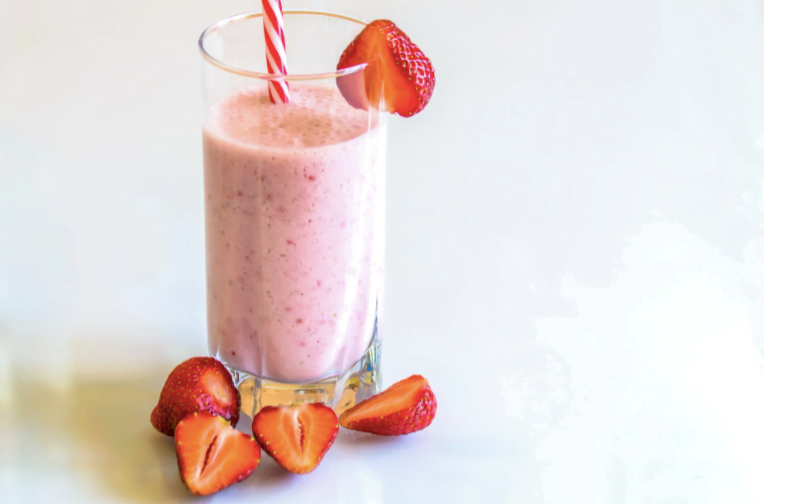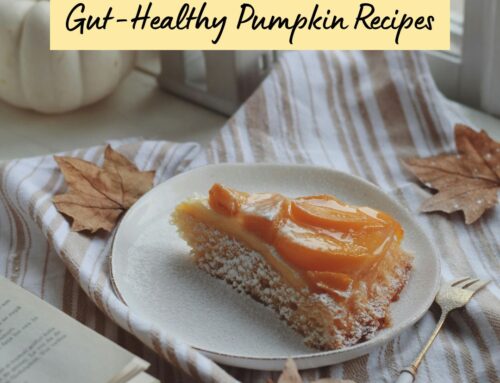It seems like there are an infinite number of potential culprits for gut issues. “Is it something I’m eating? Is it something I’m not eating? What about a medical condition, like a parasite or SIBO? Could it be plain old IBS?”
We know that gut health journeys can be convoluted and that finding the cause of your symptoms may take some work. But one thing that likely contributes to many people’s gut health symptoms is fructose consumption.
Maybe you’re thinking – fructose? Isn’t that in fruit – which is healthy for us?
Yes, and yes. But in excess, probably not. Let’s examine how monitoring fructose consumption could help alleviate your digestive issues.
About Fructose and a Brief History
Fructose is a type of sugar. There are several types of sugars that we tend to consume, including sucrose (table sugar), glucose (found in starches), fructose (found in lots of fruits and vegetables), maltose, isomaltose… and the list goes on.
Fructose consumption has skyrocketed over the last few decades – for a good reason (1). It tastes great! But there’s a darker side to the ramp-up.
We know you’ve heard a million and one stories about the “evils” of the food industry, but hang in there with us – this may help you with your gut issues.
Food companies began using high fructose corn syrup in the 1970s and 1980s (2). All that means is that they replaced the sugar mix they were using before (which was composed of about 50% sucrose and 50% fructose) with sugar mixes that were higher in fructose. These newer sugar mixes are typically referred to as “high-fructose corn syrup.” After this shift, Americans’ fructose consumption seems to have increased (1).
Scientists argue that there’s an issue with that: our small intestines can process only a certain amount of fructose at a time (3). Fructose seems to be more challenging to digest in excess than other sugars, like glucose.
The body seems to tolerate small portions of fructose, somewhere around 25g at a time, such as what’s found in fruit (3). But here’s the kicker: fructose content in a single fruit is much lower than the amount found in an equal amount of high fructose corn syrup.
Let’s look at a quick example. One medium apple, weighing 169 grams, contains about 10g of fructose (4). On the other hand, About half a cup of high-fructose corn syrup, weighing about 169 grams, contains about 70g of fructose (5). That’s a 7-fold difference – you’d have to eat seven apples to match just half a cup of corn syrup!
Why We Struggle With Fructose Absorption
You might be asking – why is it that we struggle to process fructose compared to other sugars?
Ask a chemist, and you may get a long-winded answer about the difference between fructose’s chemical structure and other sugars’ chemical structures. But today, we’ll keep it simple.
In short, the theory goes like this: we have specialized cells in the small intestine designed to absorb fructose. Each person has a limited amount of these cells. Consume too much fructose, and you’ll overwhelm them (7, 8). This leads to too much unabsorbed fructose hanging around in the gut.
Too much unabsorbed fructose hanging out in the gut can piss off our immune system and gut microbiome and may even perpetuate dysbiosis (6). It can cause nasty symptoms like (7):
- Intense bloating and gas (gut microbes may ferment the fructose)
- Abdominal pain
- Irregular motility
- Nausea
Some people can tolerate fructose better than others. This may be due to the amount of “fructose carrier” cells in their guts. It may also have to do with the status of their microbiome.
It is estimated that about a third of people have what’s referred to as “fructose malabsorption,” meaning they struggle to digest the amount of fructose commonly consumed in a typical westernized diet (7).
Do you suspect that you have fructose malabsorption? You can find out by limiting your fructose consumption or cutting it altogether. Check out our next blog to learn how.
Thanks for joining us today, and join us at @igynutrition on Instagram to stay in the loop. See you next time!
References
- https://academic.oup.com/jn/article/139/6/1228S/4670461
- https://pubmed.ncbi.nlm.nih.gov/19064536/#:~:text=High%2Dfructose%20corn%20syrup%20(HFCS,beverage%20industry%20in%20the%201970s.
- https://www.ncbi.nlm.nih.gov/pmc/articles/PMC1994910/#:~:text=Healthy%20subjects%20have%20the%20capacity,and%20intolerance%20with%2050g%20fructose.
- https://fdc.nal.usda.gov/fdc-app.html#/
- https://www.nutritionvalue.org/Syrups%2C_high-fructose%2C_corn_nutritional_value.html?size=100+g
- https://www.ncbi.nlm.nih.gov/pmc/articles/PMC3471321/#:~:text=Unabsorbed%20fructose%20reaching%20the%20colon,%2C%20flatulence%2C%20and%20loose%20stools.
- https://www.foodintol.com/fructose-intolerance/fructose-malabsorption
- https://www.ncbi.nlm.nih.gov/pmc/articles/PMC6457363/




